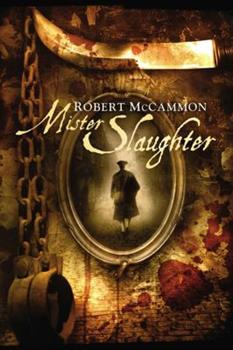Robert McCammon’s Freedom of the Mask, the sixth in his Matthew Corbett series, is a brutal novel.
I’ve read the books from the series in the following order: one, seven, four, three, two, six. There’s a gap, as I don’t have book four, the enigmatic and supposedly slim book with perhaps the best title, The River of Souls. I read the second book, The Queen of Bedlam, just last week, and read all but the first book during 2021, which compressed the events and kept them fresh in my mind. Still, reading them out of sequence makes for a strange perspective, where I have seen both the future and the past at the same time.
In terms of the plot, I knew some of what to expect after having read the seventh book, Cardinal Black. Still, I had no idea of the vast pain which Corbett experienced in this book, which is monumental and covers the spectrum from the physical and psychological. How the man lives and continues in the face of what he experiences in this book is astounding. I almost had to skip the torture scene near the end, for I could not believe McCammon put his main character through that event.
Freedom of the Mask is again a hefty book, clocking in at almost 600 pages. The copy that I acquired came relatively cheap, but at the same time at a price (for someone who appreciates books). Although not listed as such, my copy is an ex-library book, bearing the red stamp of “discard” within the back cover, and the spine slightly askew from lack of care. Still, for less than $35 it was mine. No doubt the person who sold it managed a significant profit, likely buying it for nothing or next to nothing, something I know savvy entrepreneurs are wont to do with their merchandise. Regardless, I looked upon it a reading copy, since I’m enthralled and captured by this tale. And, read it I did, over the span of less than four days.
The book opens with Matthew Corbett dead, or so it seems. He has vanished in the Carolina colonies, near Charles Town, a fetid alligator infested swamp; to get the details I’ll need to read The River of Souls. Corbett’s friend Hudson Greathouse cannot believe Corbett is dead, and so begins an investigation. We learn after a few pages that Corbett is not dead, but on a ship bound for England, his memory gone, and under the careful watch of the nasty Count Dahlgren, a brigand and minion of Professor Fell featured a long time ago in The Queen of Bedlam. In the midst of a storm Corbett regains his memory, kills Dahlgren, and is thrown in the brig by the crew for his deed. In England, he lands in one prison after another, even the infamous Newgate, before he’s sprung by a mysterious serial killer dubbed “Albion.”
Greathouse, along with Corbett’s love Berry Grigsby, sails for England, but is captured by Professor Fell and taken to his Welsh village (first mentioned in The Queen of Bedlam). After many adventures and terrible events, Corbett ends up in the same place. Will he be able to save himself and his friends? The book ends on a cliffhanger, continued in Cardinal Black, but throughout the novel the ills that befalls Corbett and his friends is a terrible read. McCammon continues to blend adventures, history, and horror, taking here almost to an extreme the adage about placing your character on a bough and then sawing it through as a means to engender tension.
As it’s a series, many of the events in prior novels come to bear in later books. Dahlgren and Mother Deare, who appeared in earlier books, are important characters here. The One-Eyed Broodies and Julian Devane, who appear here for the first time, play important roles in the sequel, Cardinal Black. As the sequel to that novel is not yet in print, it will be interesting to see which characters from it inform the later book. There are at least two people, both of whom appear in the last pages, who no doubt will play some roles. Will other events resurface, and from how far back? The next novel supposedly isn’t the last in the series, so what else will befall Corbett? How far down will Corbett be pulled? Will he rise again, and what will happen to Berry and Hudson Greathouse?
Although Corbett is only twenty-four years of age, he seems to have lived twice that span in his adventures. Will there be any sense of peace in his life? Tension informs and drives fiction, but at some point it seems that the needle is pushed too far in that direction. I’ve said this before, but Corbett doesn’t seem to solve all his problems himself, and it would be nice if he tried, instead of relying on chance and others. At some point, does he gain the skills we see in other characters, such as Greathouse or Minx Cutter, or does he rely on chance and luck? Still, the pace, setting, characters, and locales are superbly written, and I think McCammon has outdone himself this time. Freedom of the Mask is not a book for the faint of heart, and it pushes the tale of Matthew Corbett from the quiet colonies to the heart of London, and beyond.


